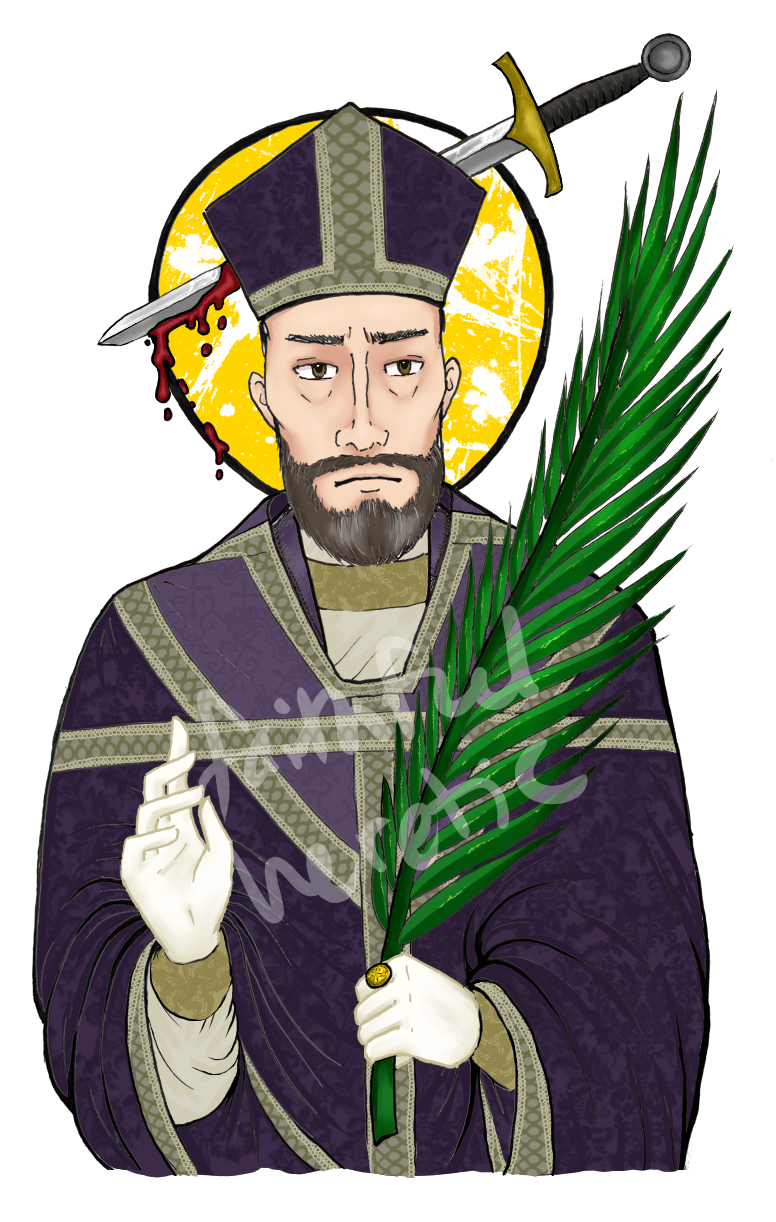Saint Thomas Becket
1119-1170, London, England
Feast Day: December 29

Background:
St. Thomas Becket was Archbishop of Canterbury, a central figure of the dramatic high-medieval struggles between Church and State, and a martyr. The politics are super complicated, the chroniclers all have their own agendas, and Becket's own motives are opaque. He was the Lord Chancellor and friend of King Henry II when the King appointed him Archbishop of Canterbury, and Becket (apparently) experienced a religious conversion. If you want to dig into the historical narratives and interpretations of Becket's story, there's a 4-part miniseries in the "Gone Medieval" podcast that you might like, called "The Murder of Thomas Becket."
Ultimately, the evidence suggests that Becket courted martyrdom rather than acting as a "rubber stamp" (wax seal?) for the king's edicts, which may have been Henry II's original motivation for selecting him as Archbishop. Henry was known to have a violent, bullish, and impulsive temper, and words that might (or might not) have been spoken in haste were taken by some of his knights as an order to have Becket killed. Becket seems to have known it was coming and staged the scene on his end to create a particular narrative. Secular narratives are, understandably, agnostic about Becket's own piety. He could have been thinking anything. But you don't stage your own assassination on behalf of an "agenda," and the knights sealed Becket's martyrdom. The murder was gruesome, and his blood and brains and bone fragments were immediately scooped up and preserved as relics. The onlookers, whether or not they understood the politics, understood that something momentous had occurred on that winter day in Canterbury Cathedral, and Becket was immediately venerated as a saint. King Henry submitted to a ritual of public penance and accepted responsibility for the murder of his former friend.
Henry VIII destroyed Becket's shrine and suppressed his cult in 1538, and the following centuries saw protests, debates, and reforms about the extent to which Church and State are accountable to each other. Is the Church above the State, or is it an arm of the State? Is it possible for the Church to be truly independent of the State? What role should the Church play in secular politics, if any? These debates continue into the present. We as post-Reformation, post-Enlightenment Protestants expect the clergy to be subject to civil law, and we hold the clergy to a much higher standard of accountability than was expected in the 12th century. Whatever his thoughts were about the relationship between Church and State, Becket seems to have believed that he was personally accountable to a higher law than the fickle whims of the king, and he paid for it with his life. His martyrdom remains his witness to us in 2024.
Iconography
- Palm frond: a traditional symbol of martyrdom.
- Sword: Becket was killed when one of the knights sliced off the top of his head with a sword.
- Vestments: Becket was Archbishop of Canterbury when he was assassinated. The vestments he wears in this icon are based on a set that he is said to have worn in real life. They are purple, the liturgical color which represents penance, but also power and authority.
- Gesture: Becket is making a hand gesture which indicates blessing. His martyrdom became a blessing to the Church.